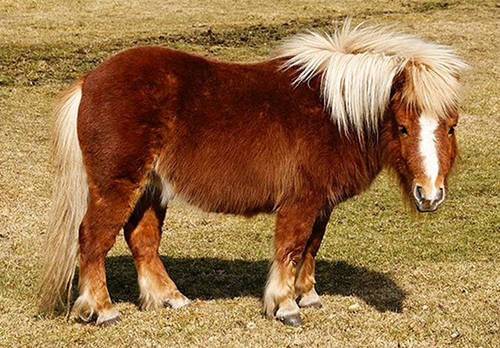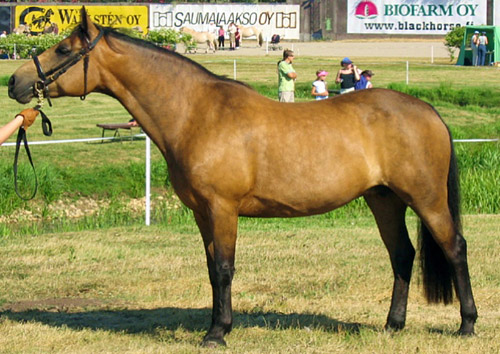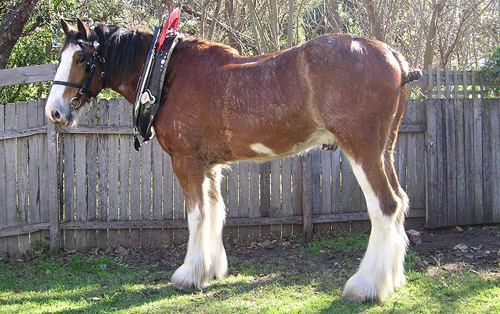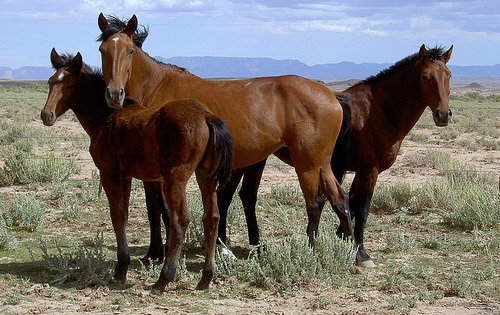
Intro
Ponies have been a part of the British landscape for over 10,000 years and their remains have been found all over the country.
(more…)

Ponies have been a part of the British landscape for over 10,000 years and their remains have been found all over the country.
(more…)

Sure footed and true, the Dales Pony are known for an iron will and strength of character. Strong enough to work hard and handsome enough to be stylish under saddle, this pony has earned itself a name as a very versatile equine.
(more…)

Curly horses are found across the planet and known for their curly coat. Their uniqueness doesn’t end their, their curls are also hypo allergenic, which means those with allergies to equines can ride them sneeze-free.
Like the origins of the Curly Horse are shrouded in mystery, especially their existence in North America as their roots have to come from the Bashker horse of the Ural mountains.
Believe it or not there are two genetically different kinds of curly coat Missouri Fox Trotters. One is a recessive Curly gene, the other is a dominant Curly gene.
The recessive gene for curly coat is carried in some Fox Trotter bloodlines. Genes work in pairs with one gene coming from each parent. It takes two normal haired curly gene carriers to create a curlie foal or a curly horse and another animal carrying a recessive gene. Recessive curls have curlier coats in the winter and shed their mane & tail hair entirely in the summertime, although they keep their curly body coat.
Horses that are curly because of a dominant gene can produce curly foals, even when bred to normal straight haired horses. Dominant gene curlies have a winter coat which ranges from wavy to very curly. In the summer they shed their coat until they have a shiny smooth or a slightly wavy body coat, but keep their mane & tail year round.
Average height 14.2 – 16.2 hands
Well-proportioned and well-balanced
Stallions display masculinity
Mares display femininity
High head carriage
Overall desirable confirmation
black | chestnut | bay | roan | pinto | palomino, cremello & buckskin
Gentle & docile manner
Friendly & willing
Riding horse
Ranch horse
Pleasure horse
* all links open in a new window
Zion’s Gate Curlies
Zion’s Gate Curlies
Lakeview Curly Missouri Fox Trotters
Zion’s Gate Curlies
Lakeview Curly Missouri Fox Trotters

The Connemara Pony originates in the Connemara region of western Ireland, a place not known for its hospitable landscape. Because of the harsh conditions, these ponies have become an incredibly hardy and tough breed.
(more…)
The Coffin Bay Pony is a semi-feral breed that is native to Coffin Bay, on the southern tip of the Eyre Peninsula in Australia. Often confused with the Brumby’s, these ponies do not share their lineage & are protected by fences from them.
(more…)

Most famous for their role as the mascot for Budweiser Beer, the Clydesdale is best known dressed up for show. White feathered feet and solid stature infuses the Clydesdale horse with a wise and regal look.
(more…)
An early descendant of Spanish horses brought to the Americas in the 16th century. They were given their name because they were brought north from Florida by the Chickasaw Indians.
(more…)

The Cerbat Mustang comes from the Cerbat Mountain area of northwestern Arizona & their numbers are dangerously low (like less than 50).
(more…)
This breed is an incredibly tough little animal, their mountainous habitat forces their calm nature & surefooted gaits.
(more…)
Although the word tacky is often thought of as cheap, it was used to describe the Marsh Tacky simply because they were so common the the swampy areas of South Carolina & Georgia.
(more…)